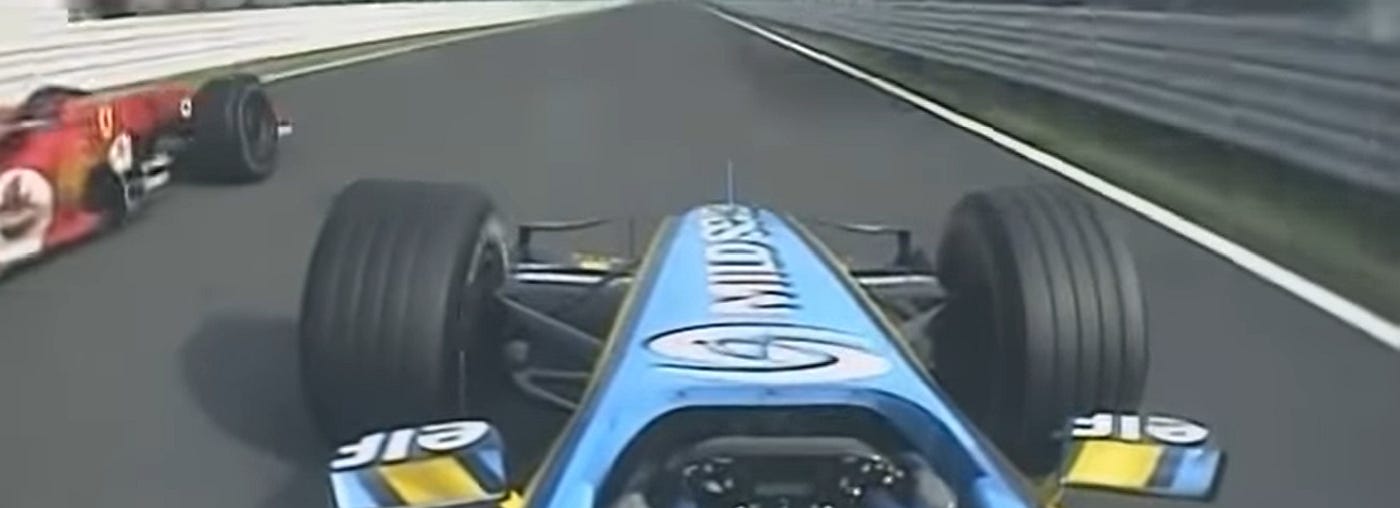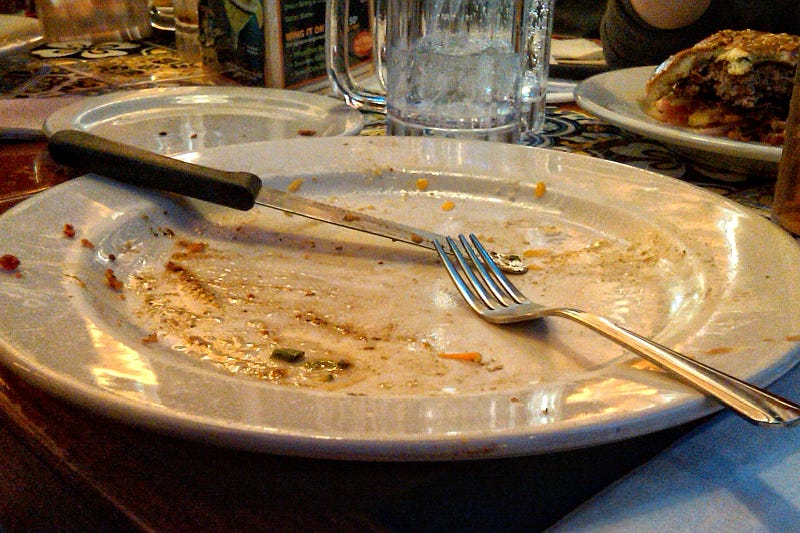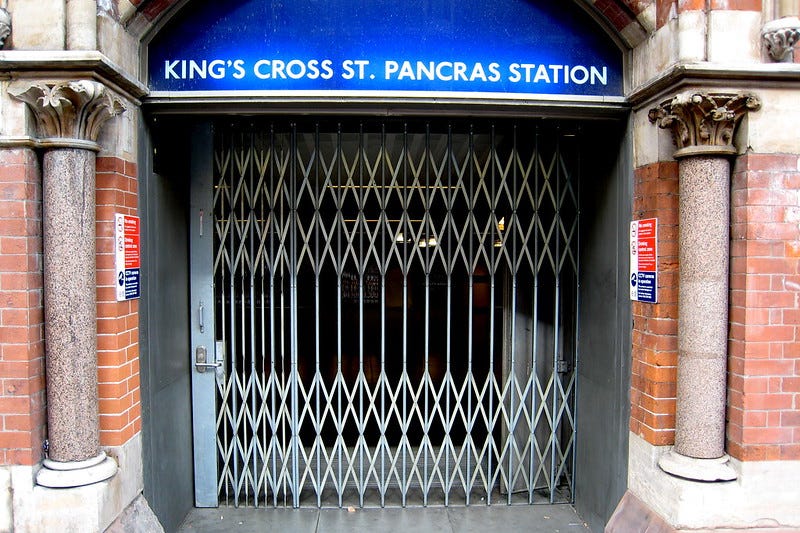Do we really optimize?
The right decision is rarely the calculated, optimal one. More often than not, it even defies calculation altogether

In the 2005 Japan F1 Grand Prix, the talk of the race was a daring manoeuvre by Fernando Alonso. In the previous race, with two races still to go, he had clinched the world championship (becoming the youngest ever, aged 24). Now in the 19th lap, at 180mph (nearly 290 km/h), he overtook Michael Schumacher on the outside in the famously challenging 130R corner, eventually to finish in 3rd position. Asked after the race about the spectacular manoeuvre, he said about Schumacher, “I knew he’d brake; he has a wife and two kids at home.” Such decision making at such high speed… Isn’t that odd?
Impossible optimization
Intuitively, we tend to see decision making as a form of optimizing: aggregating costs and benefits into an overall ‘utility’. Often that means trading off multiple facets, but eventually we feel we end up with a decision that cannot be improved overall. Alonso, braking later than Schumacher, was clearly taking the greater risk. But did Schumacher really make a risk/reward trade-off? Did he work out that zooming through the corner a little slower was just fine, but going faster was too high a risk, bearing in mind his loved ones – while he was steering his car through that bend at 80 metres per second? Unlikely.
A more plausible alternative is that both drivers were motivated in different ways. Alonso – even with his secure first place in the world championship – saw an opportunity to cock a snook at his competitor, and judged doing so worth the risk. Schumacher, evidently happy to take the ordinary risks, was unwilling to take the extra risk of braking late for the corner, because of his “wife and two kids”. His top imperative was going home to his family in one piece; Alonso’s was beating his opponent in this duel. Those simple individual rules made the decision making under extreme time pressure much easier than performing a complicated calculation.

But we don’t just rely on such rules in situations where it is literally impossible to calculate optimum trade-offs. During a meal, when do we stop eating? Since we eat in order to provide our body with energy, the optimum would be to stop when we have replenished the stock. For billions of years, our ancestors managed to respond to the signals in their bodies to decide when to stop eating. What do we do (most of the time)? We keep eating until we have cleared our plate (often ending up feeling uncomfortably full). Most of us were taught to do so when we were little, and this has become a rule we unthinkingly apply at every meal.
This choice mechanism appears to emerge at a young age. A silly game I used to enjoy playing as a kid was “Would you rather?” – my friends and I quizzing each other which of two increasingly ridiculous options we would prefer. Would you rather eat a live frog, or come to school in your underpants? Would you rather sleep in the graveyard, or draw a moustache on your face with black marker? We always managed to quickly determine which of the two options was the best one – because we intuitively knew what was most important for us. For some that was avoiding gross or scary things, for others it was avoiding embarrassment.
(Almost) evading quantification
Not being able to quantify all the factors of a decision on a common scale barely seems to faze us. Often, we are pretty clear not only about what we must avoid and what we want to pursue, but also about the relative importance of these things. This allows us to make quick calls when faced with binary choices – which a surprisingly large fraction of our decisions reduce to.
Yet economists and policymakers often try to force quantification through concepts like Willingness to Pay (WTP) and Willingness to Accept (WTA). They seek to evaluate the likely (positive or negative) welfare effects of policy measures by asking people what they would be prepared to pay to undo a negative outcome (or to accept to undergo it); or how much they would pay to obtain a positive outcome (or accept to forego it). A recent paper by Cass Sunstein explores the limitations of this approach, pinpointing several weaknesses at the individual level. People often lack sufficient facts to make an informed assessment, are subject to various behavioural biases, and may misjudge future pleasure or pain. Clearly, WTP/WTA calculations would be both effortful and futile for decisions like how fast to take a corner or when to stop eating.
An interesting case in point is a remarkable natural experiment that took place in London during a two-day strike which closed some Underground stations. Many commuters were forced to search for alternative routes to work, and – thanks to the contactless Oyster Card access mechanism – the researchers were able to establish that 5% of those who adopted a different itinerary during the strike stuck to it. However they had chosen their original route, they had unquestioningly kept on following it as a rule until the strike. Yet even then, they still did not sit down and calculate the optimum route. All they did was find a better one, by luck rather than by design, and adopted it as a new rule.

What all these choices have in common is that the decision maker considered them as right. For Schumacher it was right to brake earlier, for Alonso it was right not to do so. For anyone eating, it is right to finish one’s plate – leaving food on the plate is socially awkward, signalling the food is not good, or that we were too greedy. All commuters prior to the strike were taking the right route to work. After the strike, some had found a new right one, while the others had not.
This illustrates very well what the great economist and polymath Herbert Simon termed satisficing – optimizing until a satisfactory level of utility is met – but with a twist: we rarely perform any optimization at all. We use a set of possible rules that help us pick, and the circumstances – the framing – informs which rule will be the dominant one, that tells us the right option. Of course, Alonso did not want to die any more than Schumacher, but for him, overtaking his rival was worth the risk. Of course, just like Alonso, Schumacher had come to the race to win, but for him, the extra risk of braking late was not worth it. The same corner, framed in different ways, guided by different rules.
That this is how we prefer to make choices rather than through optimization is not just because of the effort. Our ability to do complex calculations emerged only yesterday on an evolutionary scale. But our ancestors have had to make critical choices for millions of years. Every single one was an ace at satisficing – making choices that were good enough to secure survival and reproduction, based on rules, and without any optimization calculations.
Even when we're forced to choose between competing rules, we (almost) never optimize –cognitive salience, priming, or external framing lead us to the right choice. Almost? Well, yes. Because sometimes, just sometimes, the right choice is to do the calculation.

